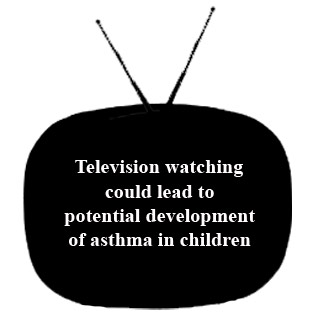
The study findings were based on the respiratory health of more than 3000 children whose health was tracked from birth to 11.5 years of age. All of these children were participants in the Children of the 90s study. Children of the 90s or The Avon Longitudinal Study of Parents and Children (ALSPAC) is a long term research project which has been following the health of 14,000 children and their parents.
These parents were questioned annually about the occurrence of any wheezing symptoms in their offspring. They were also questioned if any doctor had diagnosed asthma in their child till the time they had reached the age of 7.5 years old, but not before the age of 3.5 years. The parents were even asked to monitor their child’s television watching habits from the age of 3.5 years onwards.
The amount of time spent watching television was taken as an indication of inactivity. The results revealed that the prevalence of asthma among children at the age of 11.5 years, who had no asthmatic symptoms when they were 3.5 years old, was 6 percent. It was also found that those children who watched television daily for more than two hours had double the risk of developing asthma, as compared to the ones who watched television for a lesser amount of time.
By the time the children were 11.5 years old, it was noticed that the level of sedentary behavior was about the same in both; the ones who had asthma, as well as the ones who didn’t. It is even stated that the study results were not confined to one gender or related to current weight.
The study states that their findings hint at the link between the breathing pattern in children and their sedentary behavior, which may in turn bring about certain developmental changes in the lungs and result in wheezing. They also state that the association between physical activity, sedentary behavior and asthma is quite complicated.
Their findings are published in the journal Thorax.
